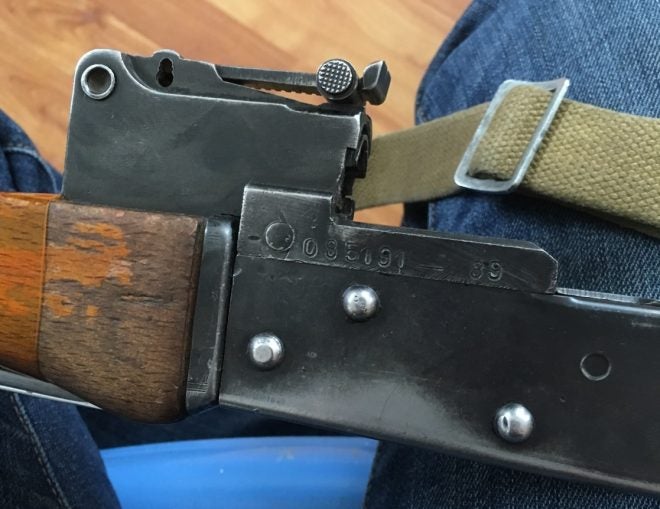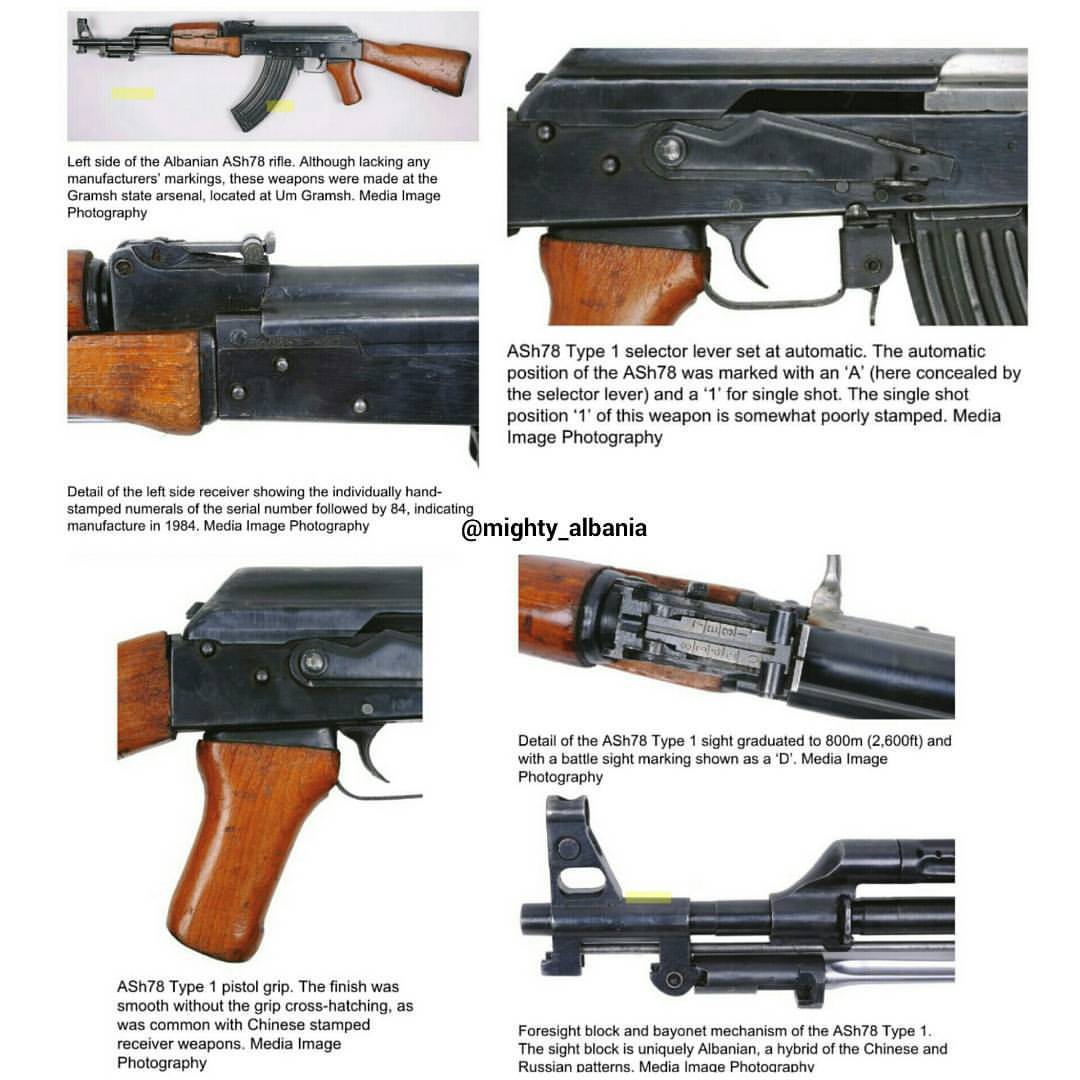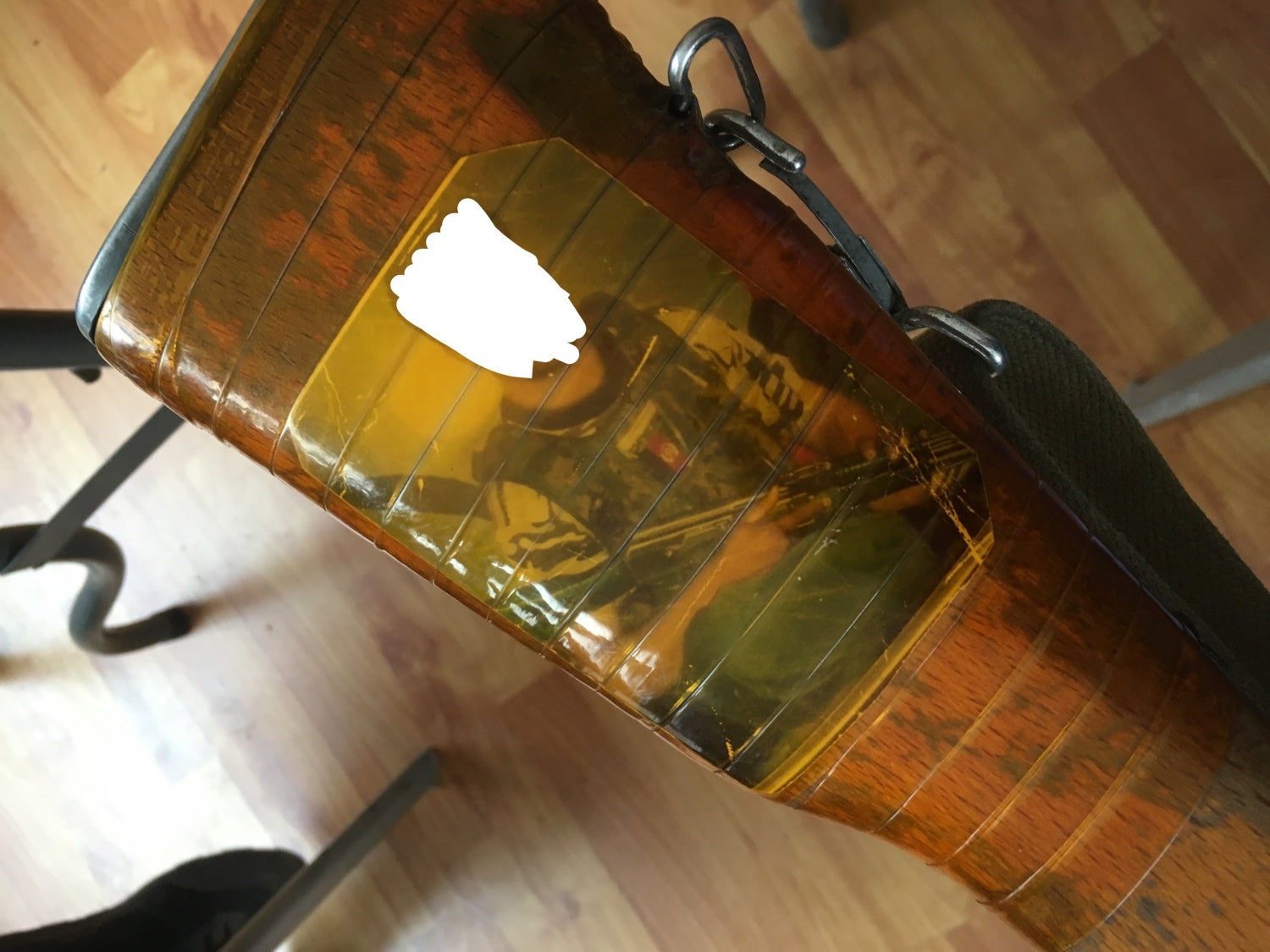Insofar as Kalashinov derivatives and clones go, the Albanian variants don’t offer much when it comes to being unique or improving the system. If anything they are one of the much more mundane and uninteresting of the Kalashnikov variants. However, when it comes to positively identifying them there are some points about the Albanian 7.62x39mm ASh78-1 and resulting variants that are worth mentioning. Most important being that the rifle can very easily be misidentified for a Chinese Norinco Type 56 with attached/folding bayonet. And this is because for the most part it is license produced version of the Chinese Kalashnikov copy.
The ASh78-1 (Automatiku Shqiptar tipi-78)was made by Albanian state-owned KM Poliçan, production running from the 1970s to 1992 when it was shut down. There were a couple of variants, an underfolder marked as the ASh-82, a support weapon as the ASh-78-2 and ASh-78-3 (similar to an RPK) that oddly enough had a rifle grenade launching capability with a muzzle extension. In addition, there was a AKS74U clone with the nomenclature of RDW1 and RDW2. These are extremely rare.
What makes this particular Albanian ASh78-1 unique is that we were able to examine it while in Kabul, Afghanistan. At first it appeared to be a handmade Darra Adam Khel rifle due to the extremely rough markings, as a copy of a Chinese Type 56. But upon consulting with TFB’s resident Soviet small arms armorer, this is indeed a very legitimate, factory made, Albanian ASh78-1 rifle.
The social media page @mighty_abania shared this graphic consisting of some of the close-ups.
For those interested in separating the ASh78 models from their Chinese cousins, a couple of very distinctive features stand out. First of all, the rifle lacks a magazine guide depression on either side of the stamped receiver. As can be seen in this photograph, the rifle also has these very simply markings for “Auto” (A) and “Single” (1) select-fire capabilities. There isn’t a “Safe” marking.
The serial number is very simply marked, along with a two digit origin year marking. There isn’t any factory number or even a marking indicating Albanian origin, which might lead some to believe these are craft produced. Note that the serial number is stamped on multiple parts of the rifle, a very common European practice.
Underneath the rear sight-
Wrapped around the majority of the wooden furniture was this translucent yellow tape, apparently in an attempt to safeguard the wood. Embedded on the left side of the stock there was a photograph of the owner’s brother who had been wounded in action against the Taliban.
Unfortunately, a feature too often seen among those bearing arms in Kabul was evident here. The shooter had wrapped the entirety of the handguards with plastic tape. This not only makes the lower portion harder to disassemble and clean, but more importantly will most likely melt under a high volume of fire.
Note the nail at lower right.
Samples of ammunition loaded in the magazine-
But how did this Abanian rifle end up in Kabul? Well, that is anyone’s best guess…
For more reading about Albanian Kalashnikovs, check out this blog post!
 Your Privacy Choices
Your Privacy Choices











